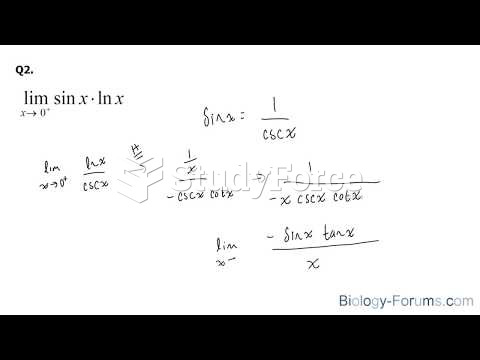|
|
|
Symptoms of kidney problems include a loss of appetite, back pain (which may be sudden and intense), chills, abdominal pain, fluid retention, nausea, the urge to urinate, vomiting, and fever.
About 60% of newborn infants in the United States are jaundiced; that is, they look yellow. Kernicterus is a form of brain damage caused by excessive jaundice. When babies begin to be affected by excessive jaundice and begin to have brain damage, they become excessively lethargic.
Illicit drug use costs the United States approximately $181 billion every year.
Medication errors are more common among seriously ill patients than with those with minor conditions.
Blood is approximately twice as thick as water because of the cells and other components found in it.







